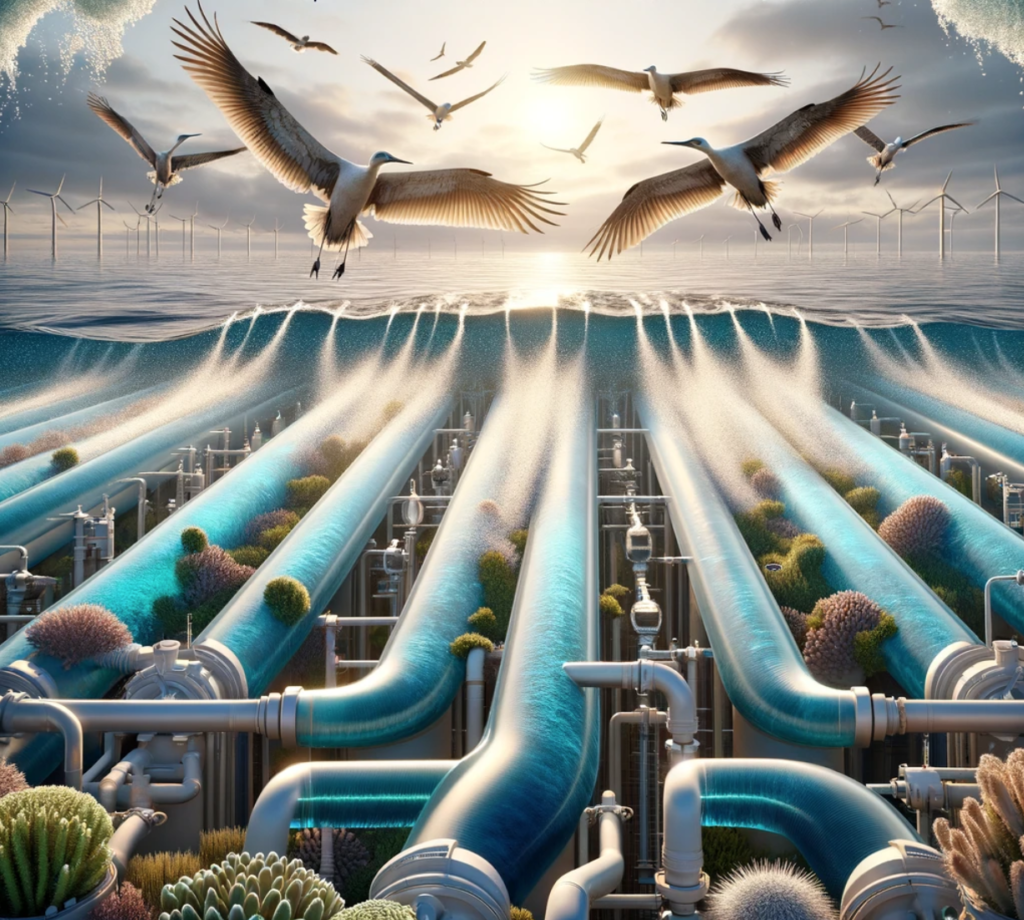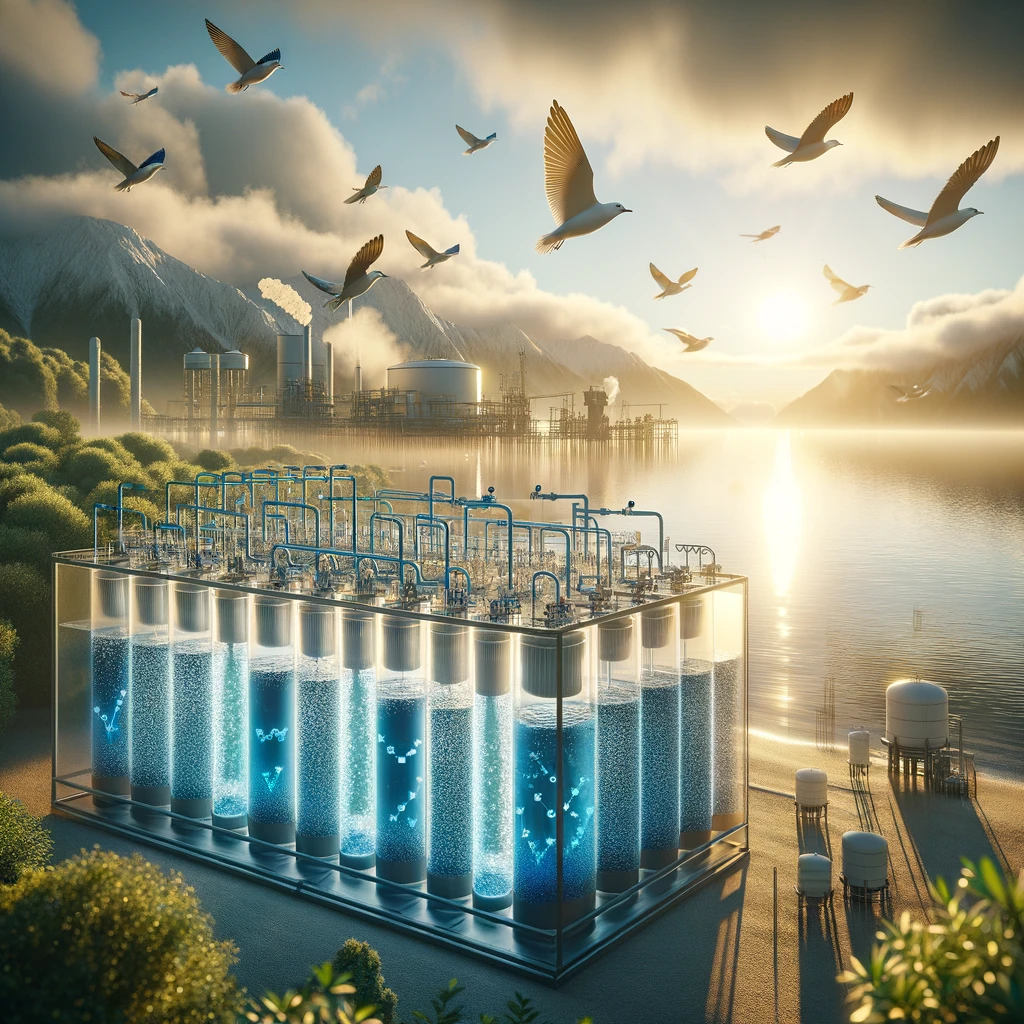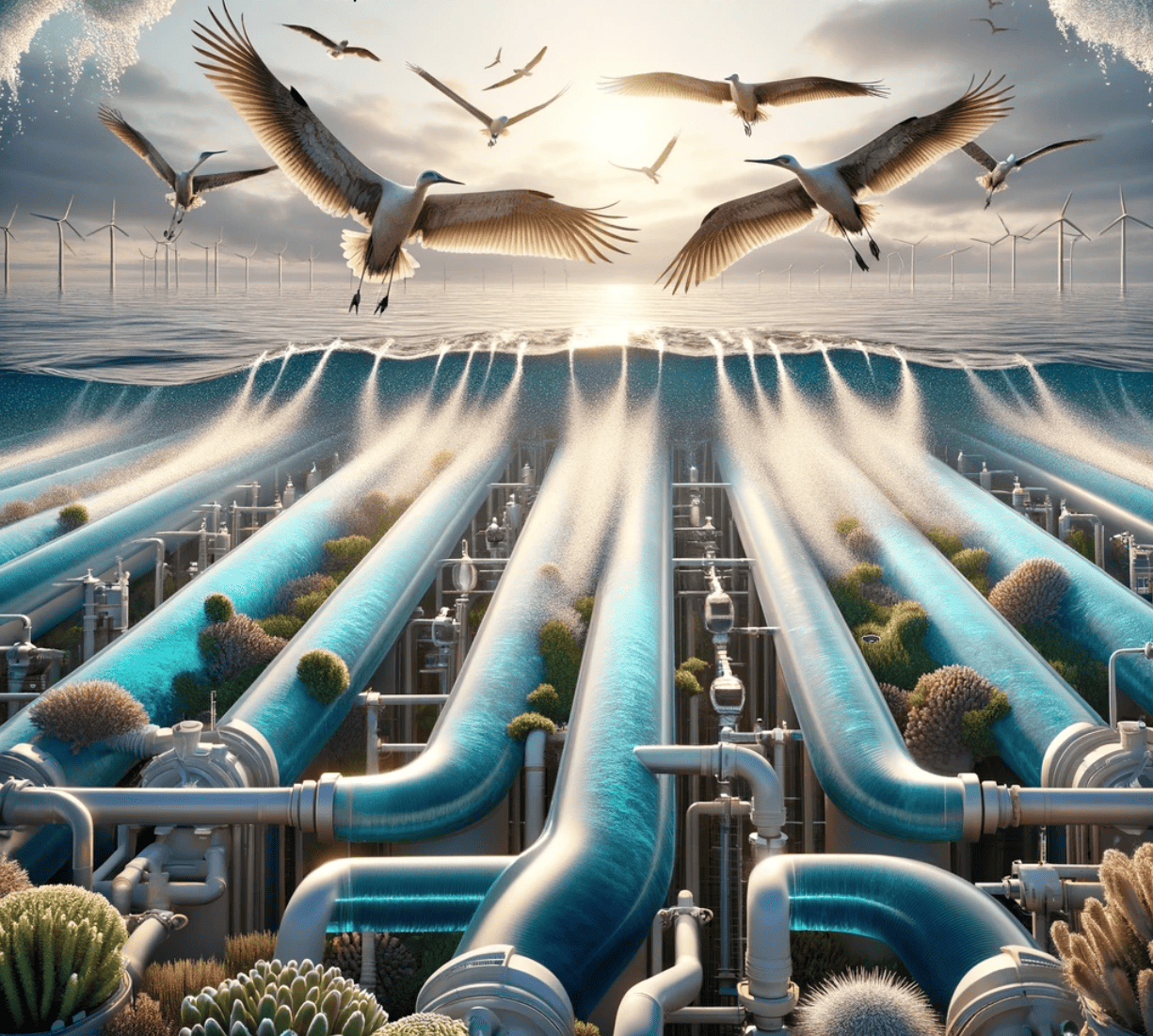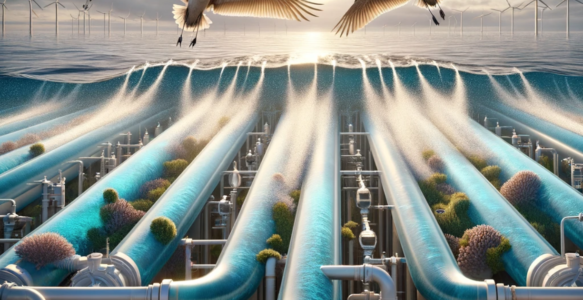
In a world looking for ways to use resources wisely, scientists have found a cool new way to turn salty water into fresh water. They got inspired by nature and made a big discovery on how to do it better. This research helps solve the worldwide water scarcity issue. It studies ultrapermeable membranes (UPMs) and a new method inspired by the V-shape formation of birds to improve water desalination.
The Essence of the Innovation
This research focuses on developing a new type of membrane module design to improve water production efficiency and address common challenges such as concentration polarisation and membrane fouling. Inspired by the energy-saving flight formations of migratory birds, the study proposes an innovative membrane module that doubles the mass transfer coefficient with only a moderate increase in friction loss. This bio-inspired approach optimises the design of ultrapermeable membrane systems. It leads to a 338% improvement in average water flux and an 18% reduction in energy consumption compared to current seawater desalination plants.
Tackling Global Water Scarcity
The research responds to the urgent call for innovative solutions to the escalating global water scarcity. With water demand rising and desalination crucial for meeting it, this study provides hope. It demonstrates the feasibility of operating at high average water fluxes (84 L m−2 h−1) while maintaining controlled concentration polarisation, thereby optimising the performance of UPM systems.
The Bio-Inspired Approach

The inspiration drawn from nature’s efficiency – the V-formation flight of birds – shows how we can learn from the natural world to improve engineering. Many birds, like migrating ibises, pelicans, and geese, fly in a V-shape to save energy. When such birds fly in this formation, they can glide longer or flap their wings less, saving about 11.4–14.0% of their energy. Applying this principle to membrane design, the researchers have effectively increased mass transfer efficiency, similar to how birds enhance their flight endurance.
For more info read Bio-inspired design of next-generation ultrapermeable membrane systems and published in npj Clean Water, Volume 7.

